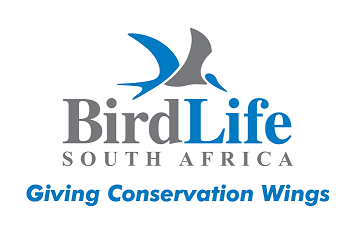Kori Bustard (Ardeotis kori)
CAR summary data
Habitat and noted behaviour
Sightings per Kilometre
Please note: The below charts indicate the sightings of individuals along routes where the species has occured, and NOT across all routes surveyed through the CAR project.
Regional Status

Global Status


IUCN Data (Global)
IUCN 2024. IUCN Red List of Threatened Species. Version 2024-1 (www)Assessment year: 2025
Assessment Citation
BirdLife International 2025. Ardeotis kori. The IUCN Red List of Threatened Species 2025: e.T22691928A246077557. Accessed on 25 December 2025.Geographic range:
This species has an extremely large but disjunct range in sub-Saharan Africa, occurring from South Sudan, Ethiopia and Somalia south to Tanzania, and from southern Angola, Namibia, south-west Zambia and Zimbabwe and Botswana, south to South Africa. Declines in its overall range over the past century appear to have been relatively modest, but it has apparently undergone considerable population declines in all range states except Zambia (few records) and Angola (Senyatso et al. 2013).A specimen record from Sudan actually referred to A. arabs (Senyatso et al. 2013) and the country is now not thought to be part of the natural range of Kori Bustard. Several small isolated outposts are suspected to have become extinct (Senyatso et al. 2013); in southern Somalia, southwest Uganda, Eswatini and KwaZulu-Natal, South Africa. This is inferred to have caused a decline in the species' extent of occurrence (EOO), though it is unclear that there is continuing reduction and the recent observation of two in far northeast Somalia (Garcia-Hall 2010) maintains the EOO at near maximum. A range-wide effort to collate records produced a value for occupied area of 3,420,000 km2 (Senyatso et al. 2013). This value was not produced by scaling occurrence across the whole range to a 2 km x 2 km grid as much of the data was available at only at a much coarser scale.
Habitats:
It occurs in flat, arid, mostly open country such as grassland, karoo, bushveld, thornveld, scrubland and savanna but also including modified habitats such as wheat fields and firebreaks (del Hoyo et al. 1996). In Kenya, at least, birds may move into woodland in the dry season. The diet includes a wide range of plants and animals including insects, reptiles, small rodents, birds, carrion, seeds, berries and roots (del Hoyo et al. 1996). It may be sedentary in parts of its range but local nomadic movements of up to 130 km are known. Diurnal (Mmassy et al. 2022).Bush encroachment transforms preferred open habitat to densely vegetated habitat and is widespread in the Namibia and Botswana parts of the Kori distribution, which are stronghold areas for the species (J. Pallett in litt. 2025). It is however unclear whether there is a continuing decline in habitat area, extent or quality across the whole range.
Population:
The global population size has not been quantified, but there are a number of national population estimates given covering around half the range (Senyatso et al. 2013, Pallett and Osborne 2015). The largest estimated population is in Namibia (5,000-10,000 individuals; Pallett and Osborne [2015]); although the population within Zimbabwe was estimated at 10,700 in 1980 (Rockingham-Gill 1983), subsequent values here have been lower at 2,000 in 1989 (Mundy 1989) and 5,000 in 1990 (Dale 1990). Botswana is suspected to have a similar population size to that of Namibia, although exceptionally low densities are found outside of protected areas (Allen 1997). The South Africa population is thought to be between 2,000-5,000 individuals (Anderson 2000) although this value was presented without justification. Very few are thought to occur in Mozambique, <100 in 1999 (Parker 1999), and it became extinct in Eswatini in the 1950s (Parker 1994). Summed, these values total 14,000-30,100 for this portion of the range, indicating that the total population considerably exceeds 20,000 individuals. A tentative, suspected population size is accordingly placed in a band of 20,000-50,000 individuals.There are two recognised subspecies, taken to be the minimum number of subpopulations, but it is suspected that the division of suitable habitat across the range has introduced additional subpopulation structure. In the absence of data on population connectivity, uncertainty is high and a large range of 2-50 subpopulations is used.
Threats:
Collisions with high voltage power lines are a major threat in the Karoo of South Africa and in Namibia, and presumably everywhere there are power lines within the range (J. Shaw and R. Coetzee in litt. 2013, Pallett and Osborne 2015, Shaw et al. 2018). Kori Bustards were the second most commonly recovered bird after Ludwig’s Bustard on extensive mortality surveys in the Karoo, with 720 (95% CI 190-1,260) estimated to be killed annually on transmission lines in the Nama Karoo (Shaw 2013, Shaw et al. 2018) and potentially 900 annually in the Namibian range (Pallett and Osborne 2015). Collision rates were estimated at 0.1 (0.05-0.19) per kilometre of line in the Karoo (Shaw et al. 2018) and the same in the Keetmanshoop area in Namibia, but corrected to 0.15 birds/km/year (Pallett and Osborne 2015), and considering distribution power lines and telephone lines the estimate of mortality was increased to 2000 birds per year. The rapid rate of energy infrastructure expansion in Africa is seeing an increasingly large number of transmission lines installed within the range of the species, such that the scope of this threat is growing.
In Kenya, wind power energy farms are being developed with target areas within the range and including habitat of the species, including Turkana in Masabit County, Samburu, Laikipia and Kajiado Counties (M. Kessler in litt. 2025). There is the potential for further collision mortality (especially noting the need for more power distribution lines), and displacement due to these developments unless the risks can be mitigated (M. Kessler in litt. 2025).
A change of land use from extensive pastoral practices by the Masai and Samburu community to permanent settlements and fencing agricultural areas is causing habitat fragmentation, but is also a further source of collision mortality as the species is prone to fly into the fences (M. Kessler in litt. 2025). The extent or impact of this threat is unquantified.
Declines in Tanzania can probably be attributed to trade in the species during the 1990s and 2000s (N. Cordeiro in litt. 2013). There is also anecdotal information from South Africa indicating that the species is used in the muti (traditional medicine) trade, hunted for bush meat, and illegally kept as pets (R. Coetzee in litt. 2013). The causes of population declines and range losses in many parts of the distribution are unknown, but have been hypothesised to include persecution, rangeland degradation and shrub encroachment (Senyatso et al. 2012). In Botswana, unregulated hunting appears to be a genuine threat while cattle-induced bush encroachment is not (Senyatso 2011).
Conservation measures:
Conservation and research actions underwayCITES Appendix II. The species is legally protected in many range states. A large-scale experiment in the eastern Karoo tested the deployment of markers on power lines but found no reduction in bustard collision rates (Shaw et al. 2021).
Conservation and research actions proposed
Continue to raise awareness to stop hunting for bushmeat and traditional medicine, and to encourage the public to report mortality from power lines. All new infrastructure (power lines, wind turbines) should be sited with special care, and mitigation measures implemented. This is the most cost-effective phase in any infrastructure planning to reduce collision rates; after power line routes are fixed and the lines are operational it is much more expensive and logistically difficult to implement mitigations. Therefore pre-construction monitoring of bustard occurrence and mortalities on nearby existing powerlines should be carried out, to inform the routing and design of new lines. On existing power lines, dangerous sections of line should be retrofitted with appropriate mitigation; effectiveness of mitigation should be monitored/assessed. Carry out further research into mitigation measures for power line collisions. Systematic surveys of mortality along powerlines are needed to quantify the impact and direct mitigation. Build trusting and working relationships with power utilities to bring both engineering and ecological expertise into finding solutions. Assess the continuing presence outside of protected areas through surveys. Development proposals for wind energy facilities should be required to include policies and guidelines to mitigate impacts on the species (M. Kessler in litt. 2025). Local and regional species action plans should be developed to address declines.
 Login
Login


